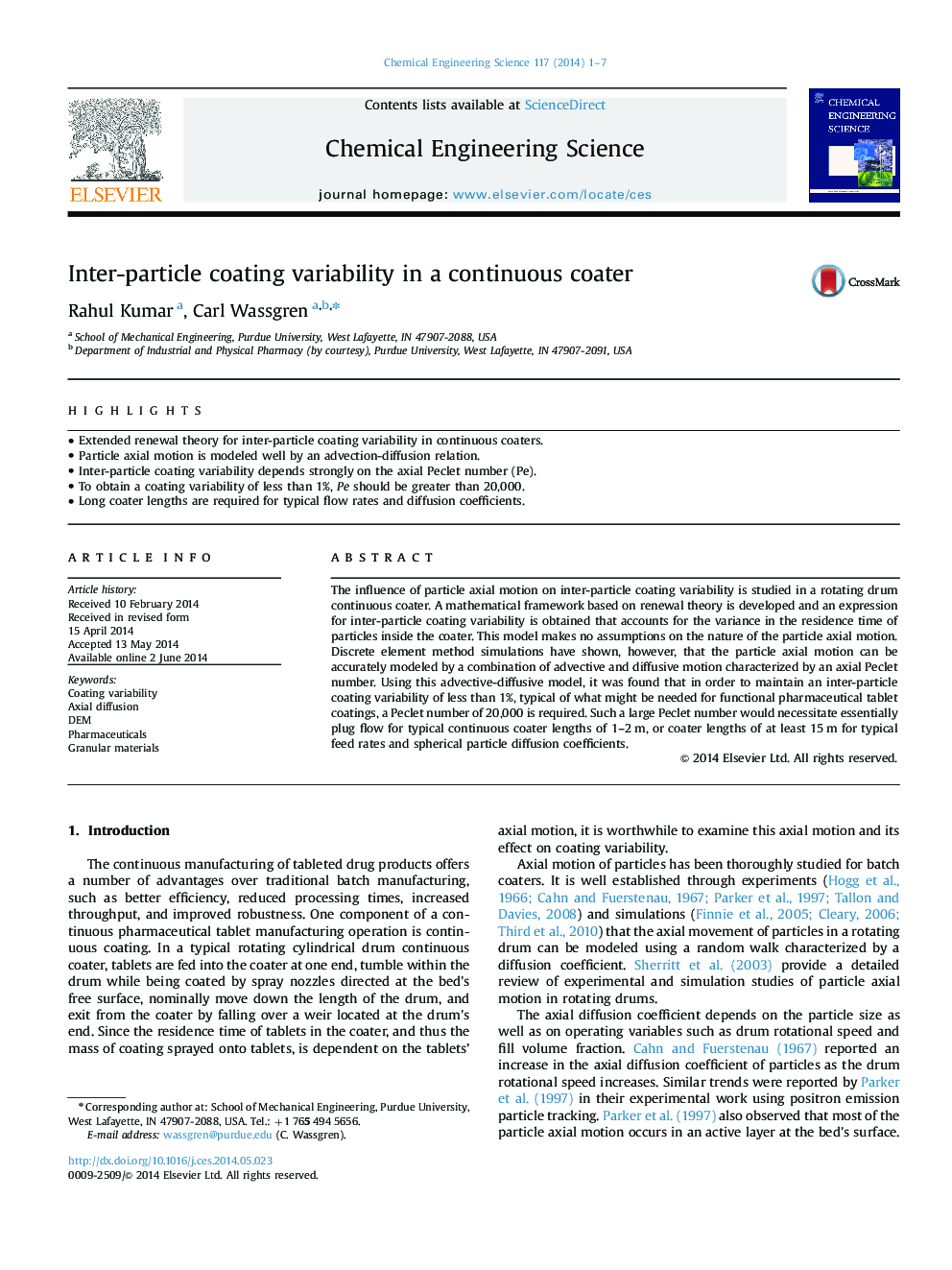| Article ID | Journal | Published Year | Pages | File Type |
|---|---|---|---|---|
| 154793 | Chemical Engineering Science | 2014 | 7 Pages |
•Extended renewal theory for inter-particle coating variability in continuous coaters.•Particle axial motion is modeled well by an advection-diffusion relation.•Inter-particle coating variability depends strongly on the axial Peclet number (Pe).•To obtain a coating variability of less than 1%, Pe should be greater than 20,000.•Long coater lengths are required for typical flow rates and diffusion coefficients.
The influence of particle axial motion on inter-particle coating variability is studied in a rotating drum continuous coater. A mathematical framework based on renewal theory is developed and an expression for inter-particle coating variability is obtained that accounts for the variance in the residence time of particles inside the coater. This model makes no assumptions on the nature of the particle axial motion. Discrete element method simulations have shown, however, that the particle axial motion can be accurately modeled by a combination of advective and diffusive motion characterized by an axial Peclet number. Using this advective-diffusive model, it was found that in order to maintain an inter-particle coating variability of less than 1%, typical of what might be needed for functional pharmaceutical tablet coatings, a Peclet number of 20,000 is required. Such a large Peclet number would necessitate essentially plug flow for typical continuous coater lengths of 1–2 m, or coater lengths of at least 15 m for typical feed rates and spherical particle diffusion coefficients.
